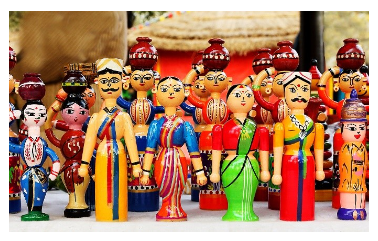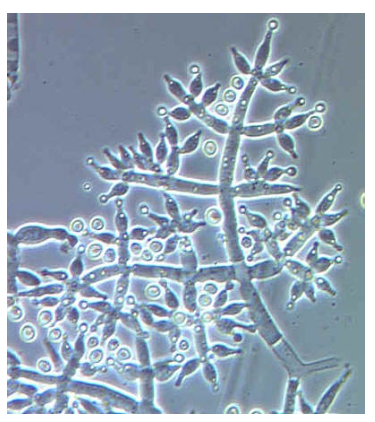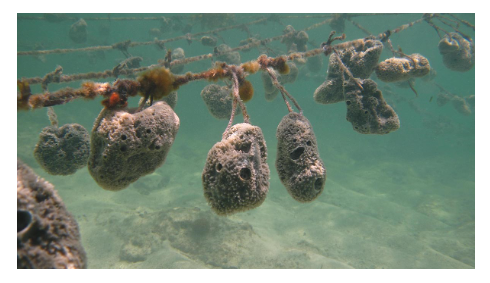Tuesday, 9th January 2024
Child Marriages in India
In News: A recent study published in the Lancet Global Health on December 15, 2023, reveals that one in five girls and one in six boys in India are still marrying below the legal age.

Child Marriage Trends in India
- National Overview
- Child marriages in India have seen a significant decline, dropping from 47.4% in 2005-06 to 23.3% in 2020-21, as reported by the latest National Family Health Survey-5 data.
- Although there is a positive trend, the prevalence of 23.3% remains alarmingly high in a country with a population of 141.2 crore.
- Regional Disparities
- Eight states, including West Bengal, Bihar, and Tripura, have child marriage rates higher than the national average, with over 40% of women aged 20-24 years marrying below 18.
- Some states, such as Madhya Pradesh, Rajasthan, and Haryana, have shown a reduction in child marriages.
Global Perspective
- Globally, UNICEF data indicates that 12 million girls are married in childhood each year.
- The UN Sustainable Development Goals for 2030 aim to eliminate harmful practices like child marriage, emphasizing the need for progress worldwide.
Impact of Child Marriage
- Child marriage, a human rights violation, adversely affects maternal and child health.
- Recent incidents, like infant deaths in Murshidabad, highlight the consequences, with economically poorer districts having higher child marriage rates.
Legal Interventions in India
- Despite laws like the Prohibition of Child Marriage Act (2006) and the Protection of Children from Sexual Offences Act (2012), child marriage persists.
- The Prohibition of Child Marriage (Amendment) Bill, 2021 proposes raising the marriage age for women to 21.
Rationale for Increasing Minimum Marriage Age
- Elevating the minimum marriage age for females addresses issues such as limited access to education and employment.
- Early marriages impact women and children's health, making it crucial to prioritize initiatives promoting higher education and employment opportunities for women.
Schemes and Policies
- Government schemes like Sukanya Samriddhi Yojana, Balika Samriddhi Yojana, and Beti Bachao Beti Padhao aim to support girl children financially, promote education, and empower women.
Research Findings
- Researchers emphasize the need for strengthened national and state-level policies to eliminate child marriage by 2030.
- The study highlights substantial variations in child marriage prevalence across states and Union Territories, with some regions experiencing declines, while others, like West Bengal, face challenges with increasing numbers.
Source: IE
India’s Toy Industry
In News: IIM Lucknow, for DPIIT, highlighted a substantial increase in Made in India toy exports in FY 2022-23 over FY 2014-15.

Status of the Indian Toy Industry: Key Findings
- Impressive Growth Trends
- The Indian toy industry has witnessed substantial growth from FY 2014-15 to FY 2022-23, characterized by a notable 52% reduction in imports and a remarkable 239% increase in exports.
- This shift underscores a move towards self-sufficiency and enhanced global competitiveness.
- Quality Enhancement
- The overall quality of toys in the domestic market has seen improvement, emphasizing adherence to international standards and ensuring consumer satisfaction and safety.
- Driving Forces of Growth
- Advancements in Manufacturing Ecosystem
- Government initiatives have successfully fostered a conducive manufacturing ecosystem, evident in the doubling of manufacturing units over six years, a significant drop in dependence on imported inputs (from 33% to 12%), a 10% CAGR increase in gross sales value, and enhanced labor productivity.
- Global Integration and Export Focus
- India's ascent as a leading toy exporter signifies successful integration into the global toy value chain.
- Zero-duty market access in key countries, such as the UAE and Australia, has contributed to this upward trajectory.
- Advancements in Manufacturing Ecosystem
Government Initiatives for Industry Growth
- National Action Plan for Toys (NAPT)
- A comprehensive plan comprising 21 specific action points, coordinated by DPIIT and implemented by multiple Central Ministries/Departments.
- This plan addresses various aspects like design, quality control, and promotion of indigenous toy clusters.
- Increase in Basic Customs Duty (BCD)
- Significant BCD hikes on toys (from 20% to 60% in February 2020, and subsequently to 70% in March 2023) aim to safeguard the domestic toy industry from cheaper imports and stimulate local manufacturing.
- Mandated Sample Testing
- DGFT mandates sample testing for each import consignment to prevent the import of substandard toys, ensuring better quality control.
- Quality Control Order (QCO) for Toys
- Issued in 2020, this order emphasizes quality standards for toys, effective from January 2021, enhancing the overall quality of toys manufactured and sold in the country.
- Provisions for Toy Manufacturers
- Special provisions by BIS, including granting licenses to small units without testing facilities, facilitate compliance with quality standards.
- BIS Standard Marks
- Over 1200 licenses granted to domestic manufacturers and over 30 to foreign manufacturers ensure adherence to quality standards through BIS marks.
- Cluster-based Approach
- Supporting the domestic toy industry through schemes like SFURTI and providing support for designing and tooling to various toy clusters.
- Promotional Initiatives
- Events like The Indian Toy Fair 2021 and Toycathon aim to promote indigenous toys, encourage innovation, and provide a platform for showcasing and ideation in the toy industry.
The Road Ahead
- To establish India as a competitive alternative in the global toy market, continuous collaborative efforts between the industry and the government are crucial.
- Embracing technology, focusing on e-commerce, encouraging partnerships and exports, investing in brand-building, and engaging with educators and parents for effective communication with children are identified as key strategic aspects.
Source: PIB
Section 132 of the Income Tax Act,1961
In News: The 2017 Puttaswamy judgment affirmed the right to privacy, but concerns persist about Section 132 of the Income-Tax Act, potentially violating citizens' fundamental rights.
Understanding Section 132 of the Income Tax Act, 1961
- Introduction and Historical Context
- Section 132 of the Income Tax Act, 1961, was introduced to replace the struck-down Taxation on Income (Investigation Commission) Act, 1947.
- The Supreme Court's ruling in Suraj Mall Mohta vs A.V. Visvanatha Sastri (1954) deemed the old act discriminatory, violating Article 14 of the Constitution.
- Empowering Tax Authorities
- Section 132 grants the tax authorities the authority to conduct searches and seizures without a prior judicial warrant if there is a "reason to believe" that income has been concealed or evaded.
- This includes the power to search buildings, places, vehicles, or aircraft based on suspicions of hiding financial assets.
- The section also allows for the seizure of relevant items during the search.
Challenges Associated with Section 132
- Breach of the Proportionality Principle
- Despite not facing formal challenges, Section 132 raises concerns about a potential breach of the proportionality principle.
- The use of search and seizure powers must align with legitimate aims, be rationally connected to objectives, lack alternative less intrusive means, and balance the means chosen with the violated right.
- Violation of the Right to Privacy
- The right to privacy, a fundamental right under Article 21, is implicated as income tax searches infringe on individuals' privacy without consent.
- Critics argue for a stricter adherence to statutory law post-Puttaswamy and emphasize the need for safeguards against potential misuse.
- Duration and Conditions of Searches
- Questions raised by the Gujarat High Court regarding the duration and conditions of searches highlight concerns.
- Instances of virtual detention without proper safeguards prompt a re-evaluation of the conditions and duration of searches under Section 132.
Proposed Solutions and the Way Forward
- Enhanced Judicial Review
- Advocating for an enhanced role of the judiciary in reviewing Section 132 applications, moving away from the Wednesbury principle, and adopting a more rigorous scrutiny standard to assess the proportionality of executive actions.
- Independent Oversight Mechanism
- Suggesting the establishment of an independent oversight mechanism or ombudsman with the authority to investigate complaints, ensure accountability, and recommend corrective measures in cases of potential misuse of powers.
- Limiting Searches Duration and Conditions
- Highlighting the need to limit the duration and extent of income tax searches, addressing concerns about individuals being kept in virtual detention without proper safeguards.
|
UPSC Previous Year Questions Prelims (2021) Q. ‘Right to Privacy’ is protected under which Article of the Constitution of India? (a) Article 15 (b) Article 19 (c) Article 21 (d) Article 29 Ans: (c) Prelims (2018) Q2. Right to Privacy is protected as an intrinsic part of Right to Life and Personal Liberty. Which of the following in the Constitution of India correctly and appropriately imply the above statement? (a) Article 14 and the provisions under the 42nd Amendment to the Constitution. (b) Article 17 and the Directive Principles of State Policy in Part IV. (c) Article 21 and the freedoms guaranteed in Part III. (d) Article 24 and the provisions under the 44th Amendment to the Constitution. Ans: (c) Mains (2017) Q.1 Examine the scope of Fundamental Rights in the light of the latest judgement of the Supreme Court on Right to Privacy. |
Source: TH
Immoral Traffic (Prevention) Act, 1956
In News: The Kerala High Court has broadened the term 'procure' in Section 5 of the Immoral Traffic (Prevention) Act, 1956, to include individuals seeking the services of prostitutes.
Understanding the Immoral Traffic (Prevention) Act, 1956
- Overview
- The Immoral Traffic (Prevention) Act (ITP), 1956, is designed to curb the commercialization of vices and the trafficking of females.
- While it doesn't outlaw sex work, it prohibits running brothels.
- Engaging in prostitution is legally recognized, but soliciting and luring individuals into sexual activities are considered illegal.
- Legal Framework
- Section 2 defines a brothel as any place used for sexual exploitation or abuse for gain.
- Prostitution, as per the act, is the sexual exploitation or abuse of persons for commercial purposes.
- Offenses and Penalties
- Section 5 penalizes those who procure, induce, or take individuals for prostitution, with a punishment of 3–7 years' imprisonment and a fine of Rs 2,000.
- For offenses against a person's will or a child, the maximum sentence can extend to fourteen years or life.
Kerala High Court's Ruling
- Background of the Case
- A petitioner faced charges under various sections of the ITP Act for being a customer in a brothel.
- Seeking discharge, the accused argued that as a customer, he should not be implicated under the ITP Act.
- Court's Interpretation
- The Kerala High Court interpreted Section 5, ruling that the term "procure" includes customers.
- While not declaring the petitioner guilty, the ruling allows charges to be filed, broadening the scope of accountability.
- Implications
- The ruling expands the meaning of "procure" in Section 5, stating that customers can be held liable for procuring individuals for prostitution.
- Differing opinions among High Courts reflect ongoing legal debates on this matter.
Legal Recognition of Sex Work
- Supreme Court's Perspective
- The Supreme Court recognizes sex work as a "profession," entitling practitioners to equal protection under the law.
- The court emphasizes the rights secured by Article 21, stating that voluntary sex is not a crime.
- Fundamental and Human Rights
- Judicial decisions affirm the fundamental and human rights of sex workers, acknowledging their right to dignity and protection under the law.
- Efforts like the Ujjawala scheme and initiatives by commissions demonstrate a commitment to addressing sex workers' concerns.
- Cultural Stigma
- Prostitution is often perceived as unethical, breaching cultural values and threatening family sanctity.
- Sex workers, particularly women, face discrimination, social isolation, and derogatory terms.
- Gender Dynamics
- The profession is viewed as degrading and exploitative, especially towards women.
- Advocates for autonomy argue that women should have agency over their bodies and career choices.
Way Forward
- Ongoing Debate
- The ethical implications of prostitution remain a subject of debate.
- Upholding trafficking laws is crucial, regardless of one's stance, to prevent exploitation.
- Sensitization Programs
- Encouraging open dialogue and educational programs to sensitize communities to diverse perspectives on sex work, considering cultural sensitivities.
- Legal Recognition
- Emphasizing the legal recognition of equality for all citizens, irrespective of their chosen profession.
Source: IE
Northeast African Cheetah
In News: The Northeast African Cheetah is experiencing a reduction in genetic diversity attributed to the illegal trade of cubs to Arab countries.

Key Facts About Northeast African Cheetahs
- Scientific Name
- Acinonyx jubatus soemmeringii
- Overview
- This subspecies of Cheetah, initially identified as Cynailurus soemmeringii by Austrian zoologist Leopold Fitzinger in 1855, originated from a specimen in Sudan's Bayuda Desert.
- Alternative Name
- Also recognized as the Sudan cheetah, it shares a closer genetic relationship with Southern African cheetahs than with those in Saharan populations.
- Distribution
- Found in Northeast Africa, specifically in Ethiopia and South Sudan, their habitat encompasses open landscapes, grasslands, and semi-arid regions, particularly in the East Sudanian Savanna.
- Habitat
- Thriving in diverse environments like savannas, grasslands, and semi-arid areas, these cheetahs strategically inhabit regions with sparse vegetation, facilitating their high-speed hunting pursuits.
- Threats
- The Northeast African Cheetah faces severe threats from illegal trafficking to Arab countries, including Saudi Arabia, the United Arab Emirates, and Yemen.
- Additionally, habitat loss, human encroachment, and hunting contribute to a significant decline in their numbers.
- Conservation Status
- IUCN Red List: Endangered.
Source: DTE
Trichoderma
In News: The Indian Institute of Spices Research (IISR) in Kozhikode has achieved success in creating a novel granular lime-based formulation incorporating Trichoderma.

Tricholime: Simplifying Agricultural Applications
- Introduction to Tricholime
- The innovative formulation, 'Tricholime,' streamlines the process for farmers by combining Trichoderma, a fungal biocontrol agent, with lime into a single product.
- This fusion aims to enhance efficiency in application.
- Trichoderma's Role
- Trichoderma has established itself as a potent fungal biocontrol agent, effectively suppressing various soil-borne plant pathogens.
- It serves a dual purpose as a bio-pesticide and bio-fertilizer, contributing significantly to crop production.
- Scientific Development
- Acknowledging the value of Trichoderma and addressing challenges in conventional lime applications, scientists at IISR developed 'Tricholime.'
- This product seamlessly integrates lime and Trichoderma to simplify the application process for farmers.
Significance of Tricholime
- Streamlined Application Process
- Tricholime eliminates the need for a time-consuming two-step application, providing a more efficient solution for farmers.
- Comprehensive Benefits
- This lime-based formulation not only neutralizes soil acidity but also promotes plant growth and protects crops from soil-borne pathogens.
- It acts as a holistic solution in a single application.
- Enhanced Soil Conditions
- Beyond its primary functions, Tricholime improves the physical condition of the soil, increases secondary nutrient availability, and enhances soil microbial activity, contributing to overall soil health.
- Future Prospects
- IISR envisions the potential extension of this technology to incorporate other beneficial bio-agents, paving the way for diverse product development.
- This innovation aligns with the goal of supporting sustainable organic farming practices.
Source: TH
Sponge Farming
In News: Rising sea temperatures compelled women in Zanzibar to transition from seaweed cultivation to climate-resilient sponge farming to sustain themselves.

Sponge Farming: A Sustainable Enterprise
- Sponge Farming Overview
- Sponge farming emerges as a novel and environmentally friendly business venture that poses no harm to marine ecosystems.
- Sponges, living animals with a unique structure, serve as the foundation for this resilient and sustainable practice.
Key Characteristics of Sponges
- Living Structure
- Sponges are living animals composed of loosely arranged cells surrounding a fibrous skeleton.
- Their specialized cells, acting as microscopic pumps, continuously draw water into the sponge, creating a dynamic and mutually beneficial environment.
- Ecosystem Support
- Sponges provide habitats for various animals, plants, and microorganisms, fostering a symbiotic relationship.
- Their pumping mechanism not only aids in extracting nutrition and oxygen but also purifies ocean water by removing impurities, including sewage.
- Global Presence
- Present in oceans worldwide, sea sponges contribute significantly to the global silicon biological sink, constituting 20% of this vital component.
Advantages of Sponge Farming
- Climate Resilience
- Sponges exhibit remarkable resilience to climate change, contrasting with traditional seaweed farming.
- They require minimal maintenance and command premium prices in the market.
- Effortless Reproduction
- Most sponges are hermaphrodites, possessing both male and female reproductive organs.
- Their ability to self-propagate through budding allows for effortless reproduction, even from damaged or fragmented sponges.
- Regenerative Ability
- The regenerative capacity of sponges enables easy commercial farming.
- New sponges emerge from small buds, showcasing adaptability and feasibility in cultivation.
Diverse Uses
- Hygienic and Antibacterial Properties
- Sponges find applications in bathing and general hygiene due to their natural antibacterial and antifungal characteristics, along with resistance to odors.
- Climate Change Mitigation
- Research indicates that sponges play a vital role in combating climate change.
- As their skeletons break down into microscopic silicon pieces, they contribute to controlling the carbon cycle in the ocean, reducing the greenhouse effect.
- Diatom Growth Support
- Dissolved silicon from sponge breakdown supports the growth of diatoms, tiny organisms crucial for absorbing large amounts of CO2 in the ocean through photosynthesis.
Source: DTE
Hog Deer
In News: A groundbreaking discovery has been made as the hog deer was sighted for the first time at the Rajaji Tiger Reserve

Hog Deer: Unveiling a Solitary Wanderer
Behavior and Social Dynamics
- The hog deer, primarily a solitary creature, is occasionally seen in small groups in open fields, particularly when food is abundant.
- Known for its sedentary nature, this species generally does not engage in migration. Males exhibit territorial behavior, marking their areas with glandular secretions.
- Notably, there is sexual dimorphism, with females being slightly smaller and lacking antlers.
Geographic Distribution
- Native Range
- The hog deer's native habitat spans India, encompassing the Himalayan foothill zone, and extends into Southeast Asia, covering Burma and Thailand.
- Introduced Populations
- Humans have introduced free-ranging populations of hog deer in various regions, including Sri Lanka, Australia, and the United States.
- Notable locations within the U.S. include Texas, Florida, and Hawaii.
Preferred Habitat
- While the hog deer appears to favor dense forests, observations also place them in clearings, grasslands, and occasionally wet grasslands.
- Their habitat selection often correlates with seasonal variations and food distribution.
Conservation Status
- The hog deer holds an endangered status according to the International Union for Conservation of Nature (IUCN).
- In alignment with conservation efforts, the Wildlife Protection Act of 1972 designates the hog deer as a Scheduled I species, emphasizing its importance for protection and preservation.
Source: TOI
iDEX: Transforming Defence Innovation Landscape
In News: The Defence Innovation Organization (iDEX-DIO), focused on Innovations for Defence Excellence, is gearing up to take part in the tenth edition of the Vibrant Gujarat Summit 2024.
- Introduction
- iDEX, the flagship initiative launched in 2018 by the Ministry of Defence, Government of India, stands as a pioneering scheme shaping the innovation landscape in the Defence and Aerospace sector.
- Objectives
- Innovation Ecosystem Cultivation
- The primary goal of iDEX is to foster an innovation ecosystem within the Defence and Aerospace domain.
- This is achieved through strategic collaborations with startups, innovators, MSMEs, incubators, and academia.
- Support for R&D
- iDEX extends grants and support for Research and Development (R&D), specifically targeting initiatives with significant potential for future adoption in the Indian defence and aerospace sectors.
- Innovation Ecosystem Cultivation
- Impact and Recognition
- Engagement Metrics
- Currently, iDEX actively engages with over 400 startups and MSMEs, creating a dynamic platform for collaboration and innovation.
- Game-Changer in Defence Ecosystem
- Recognized as a game-changer, iDEX has been honored with the PM Award for Innovation in the defence sector, underscoring its transformative impact.
- Engagement Metrics
- Funding and Management
- Creation of Defence Innovation Organization (DIO)
- Funding and management responsibilities rest with the 'Defence Innovation Organization (DIO),' established as a 'not-for-profit' company under the Companies Act 2013.
- The two founder members, Defence Public Sector Undertakings (DPSUs) - HAL & BEL, play a pivotal role in this organizational structure.
- Operational Framework
- While iDEX functions as the executive arm, executing essential activities, the DIO provides high-level policy guidance, ensuring a coordinated approach towards fostering innovation in the defence sector.
- Creation of Defence Innovation Organization (DIO)
Source: PIB
Reverse Flipping - Edukemy Current Affairs
In News: Indian startups, particularly in the fintech sector, are increasingly adopting the trend of reverse flipping as they strategize for Initial Public Offers (IPOs).
About Reverse Flipping
- Reverse flipping, also referred to as 're-domiciling,' involves relocating the domicile of an Indian company back to India after it had previously moved its headquarters overseas, typically for tax or regulatory considerations.
- This strategic maneuver is driven by India's thriving economy, a vast market, promising venture capital landscape, advantageous tax structures, robust intellectual property protection, a young and educated population, and supportive government policies.
Source: ET
Utilizing Structured Negotiation for Addressing Disability Rights Challenges
In News: A recent article delves into the significance of structured negotiation in addressing challenges faced by Persons with Disabilities (PwDs) and examines various issues affecting this population.
Structured Negotiation: A Collaborative Approach to Disability Rights
Overview
- Innovative Dispute Resolution
- Structured negotiation is emerging as a collaborative and effective method for resolving disability rights issues, moving away from traditional litigation.
- Social Welfare Legislation Focus
- The process involves inviting defaulting service providers for negotiations, emphasizing compliance with social welfare legislations.
Successes in the US
- Effective in Disability Rights Cases
- Structured negotiation has demonstrated remarkable success in settling disability rights cases in the United States.
- Addressing Accessibility Issues
- It has proven successful in resolving various accessibility issues, including those related to ATMs, point-of-sale devices, pedestrian signals, and service provider websites.
Advantages of Structured Negotiation
- Cost and Publicity Concerns
- Defaulting service providers are motivated by a desire to avoid high litigation costs and negative publicity.
- Barrier-Free Marketplace
- Complainants seek a barrier-free marketplace through structured negotiation.
Role of Legal Precedents
- Creating Disabled-Friendly Precedents
- Success in structured negotiation relies on establishing strong legal precedents favoring disability rights.
- Blueprint for Accessibility
- Courts play a crucial role in creating a blueprint for accessibility, enabling businesses to comply without resorting to litigation.
Challenges Faced by Disabled Population in India
- Limited Awareness in Rural Areas
- The primary challenge is the lack of awareness about government schemes and benefits for people with disabilities, especially in rural areas.
- Access to Education and Employment
- Persons with disabilities in rural areas face challenges in accessing education and employment opportunities.
- Inadequate Infrastructure
- Public spaces often lack accommodations, restricting mobility and participation in various activities.
Challenges in Implementing Disability Rights Laws in India
- Awareness Gap
- Despite the enactment of laws like the Rights of Persons with Disabilities Act, gaps persist due to a lack of awareness among individuals with disabilities.
- Insufficient Political Participation
- Disabled individuals face barriers in political participation, including issues with voting accessibility and inadequate representation.
How Structured Negotiations Can Promote Disability Rights
- Addressing Legal System Challenges
- Structured negotiation can overcome challenges like pendency and red tape in Indian civil courts.
- Supplementing CCPD's Efforts
- It can complement the efforts of the Chief Commissioner for Persons with Disabilities (CCPD) in enforcing compliance.
- Direct Involvement of Disabled Individuals
- Structured negotiation allows direct involvement of disabled individuals in addressing concerns and monitoring solutions.
Potential of Structured Negotiation in India
- Avoiding Non-Compliance Issues
- Service providers can avoid non-compliance embarrassment through effective structured negotiation.
- Direct Involvement
- Persons with disabilities can directly engage with service providers, ensuring the implementation of accessibility fixes.
- Business Prioritization
- Businesses must prioritize disability inclusion to tap into the substantial buying capacity of disabled users.
Promoting Constitutional Mandates
- Article 41 of DPSP
- Emphasizes the state's obligation to secure the right to work, education, and public assistance for disabled individuals.
- Structured Negotiation's Role
- Supplements government efforts in fulfilling constitutional mandates related to the relief of the disabled and unemployable.
Conclusion
- Efficacy of Structured Negotiation
- The collaborative approach of structured negotiation is pivotal in addressing disability rights, showcasing its practical advantages over traditional litigation.
- Inclusive and Accessible Future
- Deploying structured negotiation on a larger scale in India is a crucial step towards fostering inclusivity and accessibility, aligning with constitutional mandates and global best practices.
|
UPSC Previous Year Questions Prelims (2011) Q. India is home to lakhs of persons with disabilities. What are the benefits available to them under the law?
Which of the statements given above is/are correct? (a) 1 only Ans: (d) Mains (2017) Q. Does the Rights of Persons with Disabilities Act, 2016 ensure effective mechanism for empowerment and inclusion of the intended beneficiaries in the society? Discuss. |
Source: TH
Share the article
Edukemy’s Current Affairs Quiz is published with multiple choice questions for UPSC exams
MCQ
Get Latest Updates on Offers, Event dates, and free Mentorship sessions.

Get in touch with our Expert Academic Counsellors 👋
FAQs
UPSC Daily Current Affairs focuses on learning current events on a daily basis. An aspirant needs to study regular and updated information about current events, news, and relevant topics that are important for UPSC aspirants. It covers national and international affairs, government policies, socio-economic issues, science and technology advancements, and more.
UPSC Daily Current Affairs provides aspirants with a concise and comprehensive overview of the latest happenings and developments across various fields. It helps aspirants stay updated with current affairs and provides them with valuable insights and analysis, which are essential for answering questions in the UPSC examinations. It enhances their knowledge, analytical skills, and ability to connect current affairs with the UPSC syllabus.
UPSC Daily Current Affairs covers a wide range of topics, including politics, economics, science and technology, environment, social issues, governance, international relations, and more. It offers news summaries, in-depth analyses, editorials, opinion pieces, and relevant study materials. It also provides practice questions and quizzes to help aspirants test their understanding of current affairs.
Edukemy's UPSC Daily Current Affairs can be accessed through:
- UPSC Daily Current Affairs can be accessed through Current Affairs tab at the top of the Main Page of Edukemy.
- Edukemy Mobile app: The Daily Current Affairs can also be access through Edukemy Mobile App.
- Social media: Follow Edukemy’s official social media accounts or pages that provide UPSC Daily Current Affairs updates, including Facebook, Twitter, or Telegram channels.






